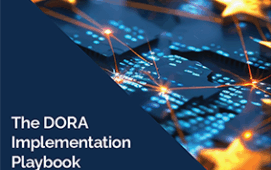As previously noted by Reference Data Review, the current review of MiFID encompasses a whole host of reference data issues, which think tank JWG has handily included in its recently updated MiFID league table. The four main reference data changes comprise the new requirements for counterparty and client identifiers, the extension of post-trade data requirements, changes to instrument definitions and treatment of products, and new rules on data availability and standard formats.
PJ Di Giammarino, CEO of JWG, elaborated upon the regulatory community’s endeavours to tie up the “loose ends” that were left over after MiFID’s introduction back in 2007 during the recent MiFID JWG reunion meeting in London. “The MiFID review process indicates that the operational windows for these new changes are much shorter than before and firms have had significantly less time to comment on proposals and will have less time to prepare for the requirements,” he explained. “Operational staff have a new set of opinions to generate in a short space of time.”
The deadline for these opinions has now gone however, and the comments from the industry on new transaction reporting, equity markets, investor protection and non-equity markets transparency requirements have already been sent to the Committee of European Securities Regulators (CESR). The regulator posed a total of 151 questions on these various proposals across four consultation papers; a staggering number given that firms were granted less than a month to respond in some cases.
But what of the reference data impacts?
New transaction reporting requirements proposed for the second iteration of MiFID involve the addition of new requirements around the provision of client and counterparty identifiers. These are aimed at providing more data certainty and avoiding the errors underlying the recent spate of transaction reporting related fines, for example BarCap last year and Commerzbank last month. At the MiFID JWG meeting, Di Giammarino explained that a recent meeting in Paris with the regulatory community on 17 May discussed the imperative for more standards and user guidelines for these reports in order to clear up these discrepancies.
The equities markets proposals also include requirements around post-trade transparency and the potential imposition of a new regulatory framework for the consolidation of market data, the so-called consolidated tape debate. In terms of reference data, the amendments to MiFID would essentially embed new standards such as ISINs for securities identification. Ditto for the investor protection and intermediaries proposals, which seek to reduce instrument complexity and set new data requirements to this end.
The non-equity markets transparency proposals, on the other hand, extend the MiFID regime to a whole host of new instruments and therefore add to the data requirements for these markets in a similar manner to the equity market. As noted by Di Giammarino, there is not a lot of detail yet about what these data standards will look like, but they will certainly be far-reaching and require a significant amount of investment from those active in these markets.
With regards to the introduction of new client and counterparty identifiers, the Swift Bank Identifier Code (BIC) has been mooted as the logical choice by CESR and the UK Financial Services Authority (FSA). Regardless of these proposals, many issues still remain with regards to the BIC acting as a legal entity identifier and Swift is currently working on addressing these. However, whether it addresses the issues enough to be able to convince those that are against its mandatory introduction, is another matter entirely.
Di Giammarino’s recommendation to market participants was to engage with the rest of the industry via associations and groups to identify the main business challenges coming down the pipe in terms of technology and operations. “Firms need to come to some agreement on common processes for data and data quality metrics,” he said. “The pace of change has increased significantly and the industry may find itself buried under the reference data deluge if it is not cautious.”
He pointed to the host of other reference data related changes outside of MiFID that are also set to hit the industry over the next year or so, of which there are around 20, as proof of the need for a new data rulebook.
Subscribe to our newsletter




